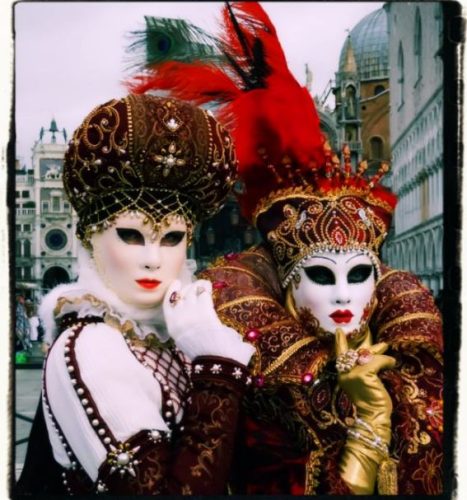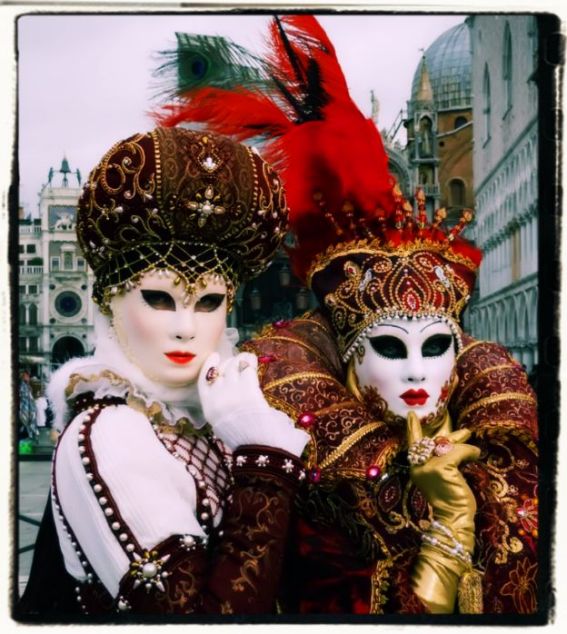
Carnival festival, an article that analyses the meaning of this celebration in the Christian societies with references to the most famous world Carnival parades and the Mardi Gras day.
The principle of laughter and the carnival spirit on which the grotesque is based destroys this limited seriousness and all pretense of an extratemporal meaning and unconditional value of necessity.
Mikhail Bakhtin
Happiness is simply a temporary condition that proceeds unhappiness. Fortunately for us, it works the other way around as well. But it’s all a part of the carnival, isn’t it?
Federico Fellini
Like Mardi Gras and Halloween rolled into a public party at the Playboy mansion, Rio during Carnaval is like no other place on earth. And the freak-flags fly like the color guard of an invading army.
James Schannep
On the world stage we are nothing but poor actors, and sometimes it is useful to be able to mask our sad roles.
Carl William Brown
During carnival, men wear an extra mask.
Xavier Forneret
Life is like Carnival…, you don’t know what joke it’s gonna do you!
Aida Nasic
The mask is as old as humanity itself and it is the symbol of the transformation of man into another ego.
O. Eberle
Good and evil are matters of habit, the temporary prolongs and the mask, in the long run, becomes the face.
Marguerite Yourcenar
Modern solidarity is only an attempt to mask one’s own stupidity by doing exercises of false humanity.
Carl William Brown
You will learn at your own expenses that in the long journey of life you will encounter many masks and few faces.
Luigi Pirandello
Franco Lissandrin
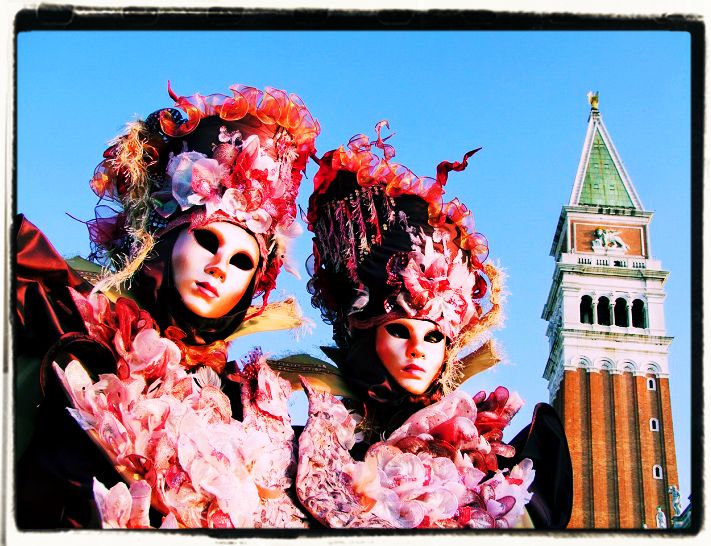
Each person is but a “theatrical mask”, an actor who plays a role and assumes a personality, that contributes to enrich the comic theatricality of human stupidity.
Carl William Brown
I have not often seen more natural acting than that of these masks. It is such acting as can only be sustained by a remarkably happy talent and long practice. While I am writing this, they are making a tremendous noise on the canal under my window, though it is past midnight. Whether for good or for evil, they are always doing something.
Johann Wolfgang von Goethe, Italian Journey
Carnival, season just before Lent, celebrated in some Roman Catholic countries by merrymaking, processions, dancing, and feasting. The word probably comes from the medieval Latin word “carnelevarium”, meaning “to take away [or to remove] meat”.
As a matter of fact during Lent, Roman Catholics and some other Christians traditionally abstained from the consumption of meat and poultry, hence the term “carnival”, from “carnelevare”, to remove meat.
In the past, Catholics were forbidden to eat meat during Lent, a 40-day period of fasting and penitence before Easter. Carnival provided a last opportunity for indulgence and partying before the abstinence and privations of Lent. Today, the word carnival is also used to describe many kinds of public festivities and outdoor amusements.
Carnival is celebrated in most countries of Europe and the Americas, especially in predominantly Roman Catholic countries and communities. The first day of the Carnival season varies from country to country. In southern Germany and Austria, where it is known as Fasching, it begins on January 6, the Epiphany, and culminates in festivities two days before Lent.
In Cologne and other parts of Rhineland Germany, the season commences at 11:11 on the morning of November 11, and the revelry leads up to the Tolle Tage (“crazy days”), the two days before Lent, which are celebrated with parades, singing, and dancing.
In parts of France and southern European countries, Carnival begins on Quinquagesima Sunday, the Sunday before Ash Wednesday, and finishes on Shrove Tuesday, the day preceding Ash Wednesday. Ash Wednesday, which remains a day of fasting for Roman Catholics, marks the beginning of Lent.
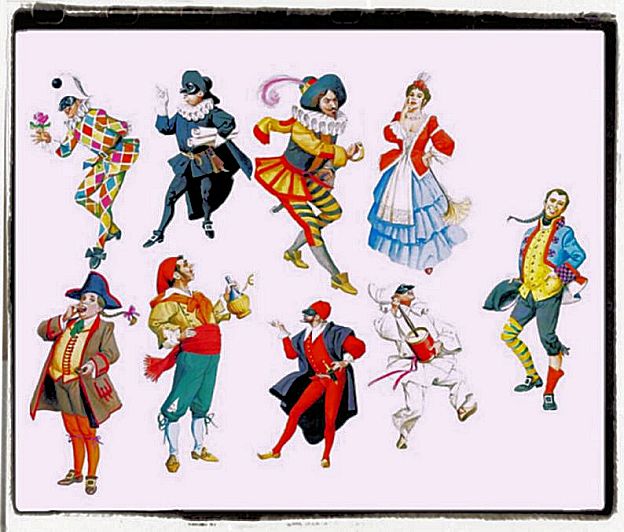
When fasting and penitence were more commonly observed during Lent, Shrove Tuesday became a time of feasting, dancing, and general merrymaking. In New Orleans, Louisiana, carnival festivities known as Mardi Gras (“Fat Tuesday” in French) are celebrated on Shrove Tuesday. The name “Fat Tuesday” comes from the practice of using up any meat and fats in the house before the start of Lent.
Some of the most colorful Carnival celebrations take place in Latin America. The dazzling Carnival celebration held in Rio de Janeiro, Brazil, draws tourists from around the world. It begins on the Saturday before Ash Wednesday and continues for four days and four nights of parades, balls, marching bands, and general revelry. The high point of Rio’s Carnival is a contest among various samba schools that compete for the best costumes, floats, music, and dancing.
Carnival dates back to pagan festivals in Roman times that celebrated the return of spring and rebirth of nature. Later on carnival became associated with preparations before the start of Lent. European settlers brought carnival to the Americas, where it was transformed by African and Native American traditions of music and dance.
Mardi Gras, also known as Shrove Tuesday or Carnival, annual festival marking the final day before the Christian fast of Lent, a 40-day period of self-denial and abstinence from merrymaking. Mardi Gras is the last opportunity for revelry and indulgence in food and drink before the temperance of Lent. The term Mardi Gras is French for “Fat Tuesday.”

The date of Mardi Gras varies from year to year, always falling between February 3 and March 9. Although Mardi Gras refers to a specific day, the term often encompasses a much longer period of celebrations leading up to Mardi Gras Day. The Carnival season is marked by spectacular parades featuring floats, pageants, elaborate costumes, masked balls, and dancing in the streets.
Some scholars have noted similarities between modern Mardi Gras celebrations and Lupercalia, a fertility festival held each February in ancient Rome. However, modern Carnival traditions developed in Europe during the Middle Ages (5th century to the 15th century) as part of the ritual calendar of the Roman Catholic Church.
Today pre-Lenten Carnivals are celebrated predominantly in Roman Catholic communities in Europe and the Americas. Cities famous for their celebrations include Nice, France; Cologne, Germany; and Rio de Janeiro, Brazil. New Orleans, Louisiana, holds the most famous Mardi Gras celebration in the United States. Residents of New Orleans have been celebrating Mardi Gras since the 18th century. Mobile, Alabama, has a lesser known but equally historic Mardi Gras tradition. Mardi Gras is informally observed in many North American cities, usually invoking the spirit of the New Orleans festivities.
Not all Mardi Gras celebrations take place in urban areas. Distinctive Mardi Gras traditions are also maintained by the Cajuns, an ethnic group that derives its culture from French Canadian refugees who settled in southwestern Louisiana during the 18th century. In rural Cajun communities, costumed revelers on horseback ride from house to house begging for ingredients to make gumbo, a thick, strongly flavored soup. Other members of the community await the riders and make preparations for a party. Around sunset, the riders make a dramatic entrance, present the crowd with the gumbo ingredients they have gathered, and join the party.
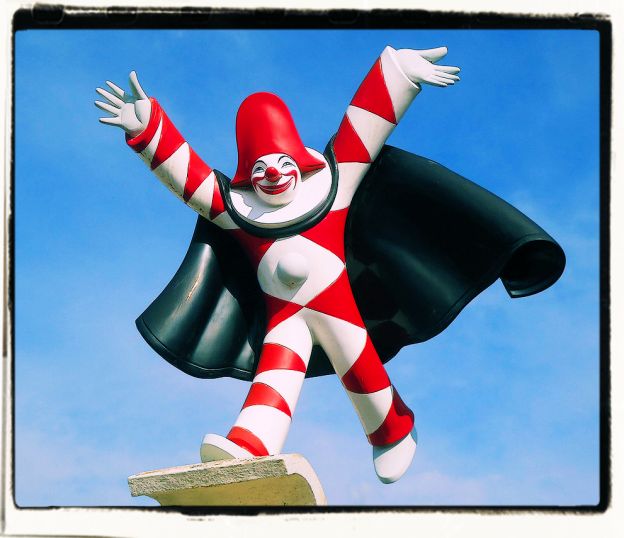
Carnival in Viareggio, Italy. A parade of floats moves through the streets of Viareggio, Italy, during the annual Carnival festival. The floats, created from a variety of materials by the city’s leading artisans, make reference to the major events and personalities of the preceding year.
Viareggio Carnival is one of the most important and famous Carnival in Italy, first organized in 1873! The program lasts about 15 days, being the Mardi Gras the last one. In 2022 on February 20th, 24th, 27th and on March 1st, 5th, 12th. The Carnival offers 5 parades of extraordinary and very colorful allegorical wagons at Viali a Mare The huge wagons, that have been charming the visitors for years, made famous the papier-mâché artists in the world, who yearly amaze the audience and challenge each other with incredible technical and artistic creations.
The constructor masters are generally inspired by current issues: this year, beyond the characters and the wagons of satirical Italian and international politics. Every parade is composed of a caravan of 14 wagons, 9 dressed up groups, and 9 single masks. Every wagon is high more than 20 meters and 12 meters wide and more than 250 dressed-up figures dance on the “first-class” wagons. More than 25 craft enterprises and one thousand people are the creators of the wagons. Most of them are sons of art who inherited the secrets and the abilities of the work by their fathers and grandfathers. At the end of the Carnival the winners are elected through a merit ranking.
The symbol of Viareggio Carnival is the Burlamacco mask, created by the painter and graphic Uberto Bonetti in 1930. The Burlamacco, inspired by the masks of the Art Comedy, was realized in a futuristic style and it sums up 2 interesting moments of Viareggio: white and red colors represent summer and the colors of the umbrellas at the beach during the 1930’s, and then during winter they became the symbol of the Carnival period.
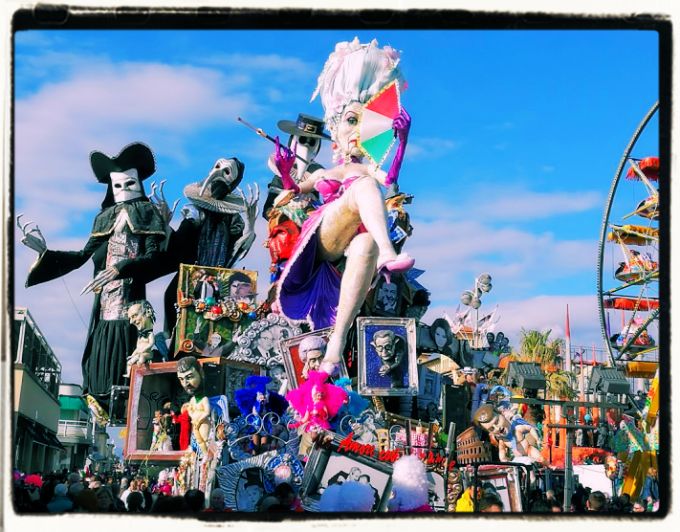
The festival of Carnival, with its spectacular street parades and vibrant music, has become one of the most potent images of Brazil. Its roots lie in the European Mardi Gras, a lively festival, which precedes the fasting and prayers of the Roman Catholic holy season of Lent. Carnival begins on the Friday before Ash Wednesday and lasts for five days. In Brazil it seems to have first occurred in Bahia in the mid-17th century and in Rio de Janeiro in the 1850s, where it was associated with street parades and elegant private balls.
Carnival did not take on its present spectacular form in Rio until the 1930s, when the dance known as the samba emerged in the favelas (shantytowns) of the city. Samba “schools” based in the favelas compete to create the most spectacular groups of extravagantly costumed dancers and original samba songs.
In Rio they now parade through the sambadrome (a street stadium) before vast crowds of Brazilians and foreign tourists. The more traditional street parties and balls also continue. Carnival is celebrated throughout Brazil, but the most spectacular celebrations outside Rio take place in Salvador, Recife, and Olinda, although the nature of the events varies.
Rhythm, participation, and costumes vary from one region of Brazil to another. In the southeastern cities of Rio de Janeiro, São Paulo, and Vitória, huge organized parades are led by samba schools. Those official parades are meant to be watched by the public, while minor parades (blocos) allowing public participation can be found in other cities, like Belo Horizonte, also in the southeastern region.
The northeastern cities of Recife, Olinda, Salvador, and Porto Seguro have organized groups parading through streets, and public interacts directly with them. It is a six-day party where crowds follow the trios elétricos through the city streets, dancing and singing. Also in northeast, Olinda carnival features unique characteristics, heavily influenced by local folklore and cultural manifestations, such as Frevo and Maracatu.
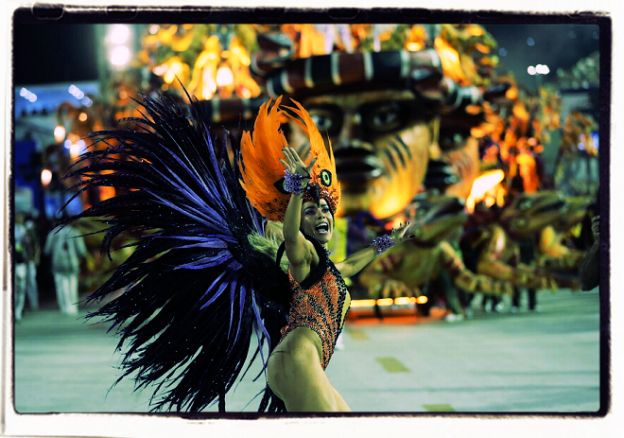
The typical genres of music of Brazilian carnival are, in the Southeast Region in general, mostly cities of Rio de Janeiro and São Paulo: the samba-enredo, the samba de bloco, the samba de embalo and the marchinha; and in the Northeast Region including Pernambuco (mostly cities of Olinda and Recife): frevo and maracatu, and Bahia (mostly the city of Salvador): samba-reggae, pagode (also a type of Samba) and the main genre axé music. These rhythms were mainly developed by Afro-brazlians and Pardos, incorporating and adapting many cultural influences, from the percussion beats of Africa to the military fanfares of Europe and iberian music in the use of instruments like pandeiro and cavaquinho.
Carnival is the most popular holiday in Brazil and has become an event of huge proportions. Except for industrial production, retail establishments such as malls, and carnival-related businesses, the country unifies completely for almost a week and festivities are intense, day and night, mainly in coastal cities. Rio de Janeiro’s carnival alone drew 6 million people in 2014, with 550,000 being foreigners.
Brazilian carnival in essence is a synthesis of European, indigenous, and Afro-Brazilian cultural influences, each group has played an important role in the development of the structure and aesthetic of the Brazilian carnival of today. For instance, the main rhythms used in carnival celebrations were developed by Afro-Brazilians and make use of European instruments like the cavaquinho and pandeiro to create melodies and arrangements, also the fantasies and costumes in the Brazilian carnival borrow concepts from the clothing of the natives, like the use of feathers and the tendency to use lighter pieces of clothing. Historically its origins can be traced to the Portuguese Age of Discoveries when their caravels passed regularly through Madeira, a territory which already celebrated emphatically its carnival season, and where they were loaded with goods but also people and their ludic and cultural expressions.
On the same topic you can also read:
Storia del Carnevale in Italia e nel mondo
Aforismi e citazioni sul Carnvale

